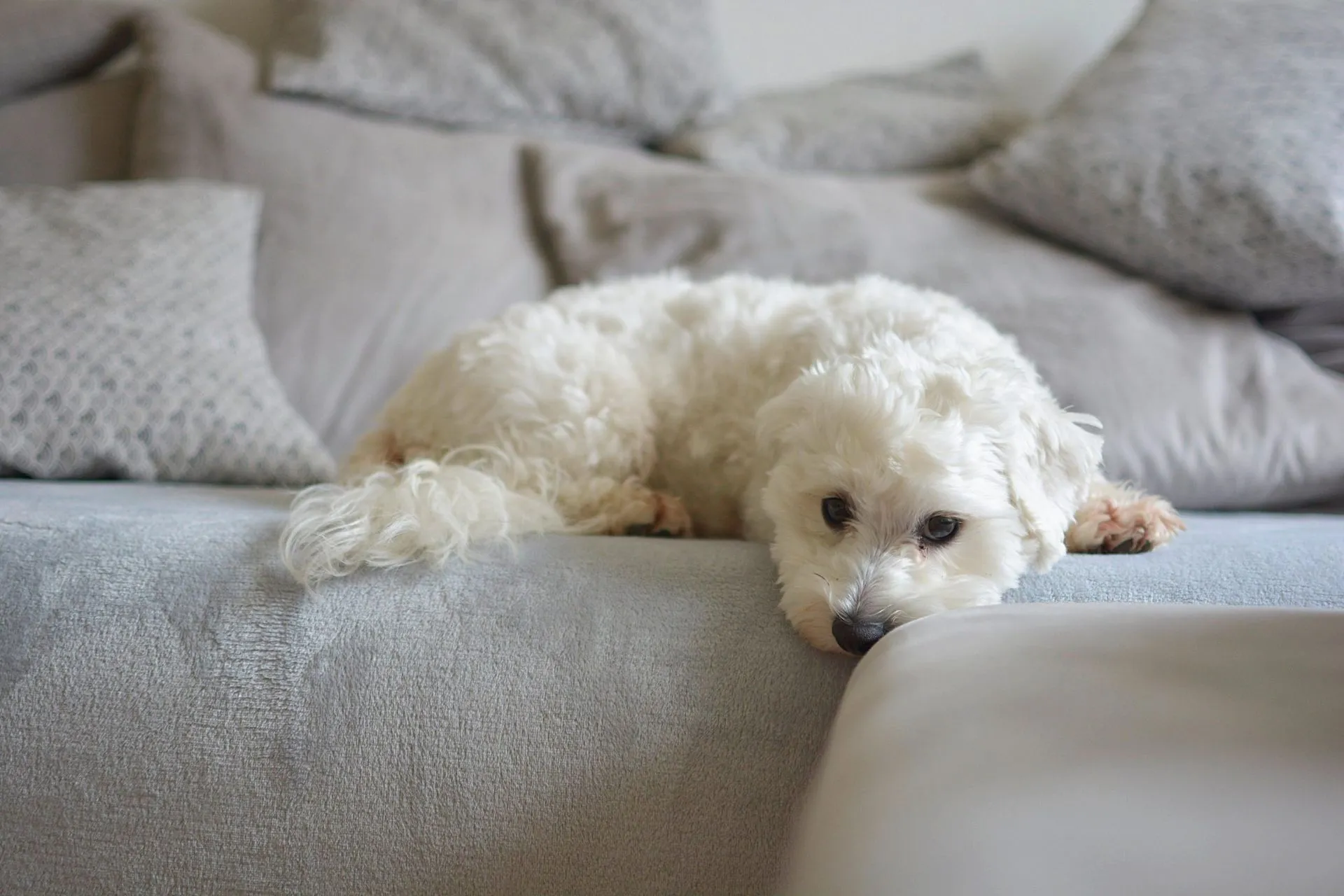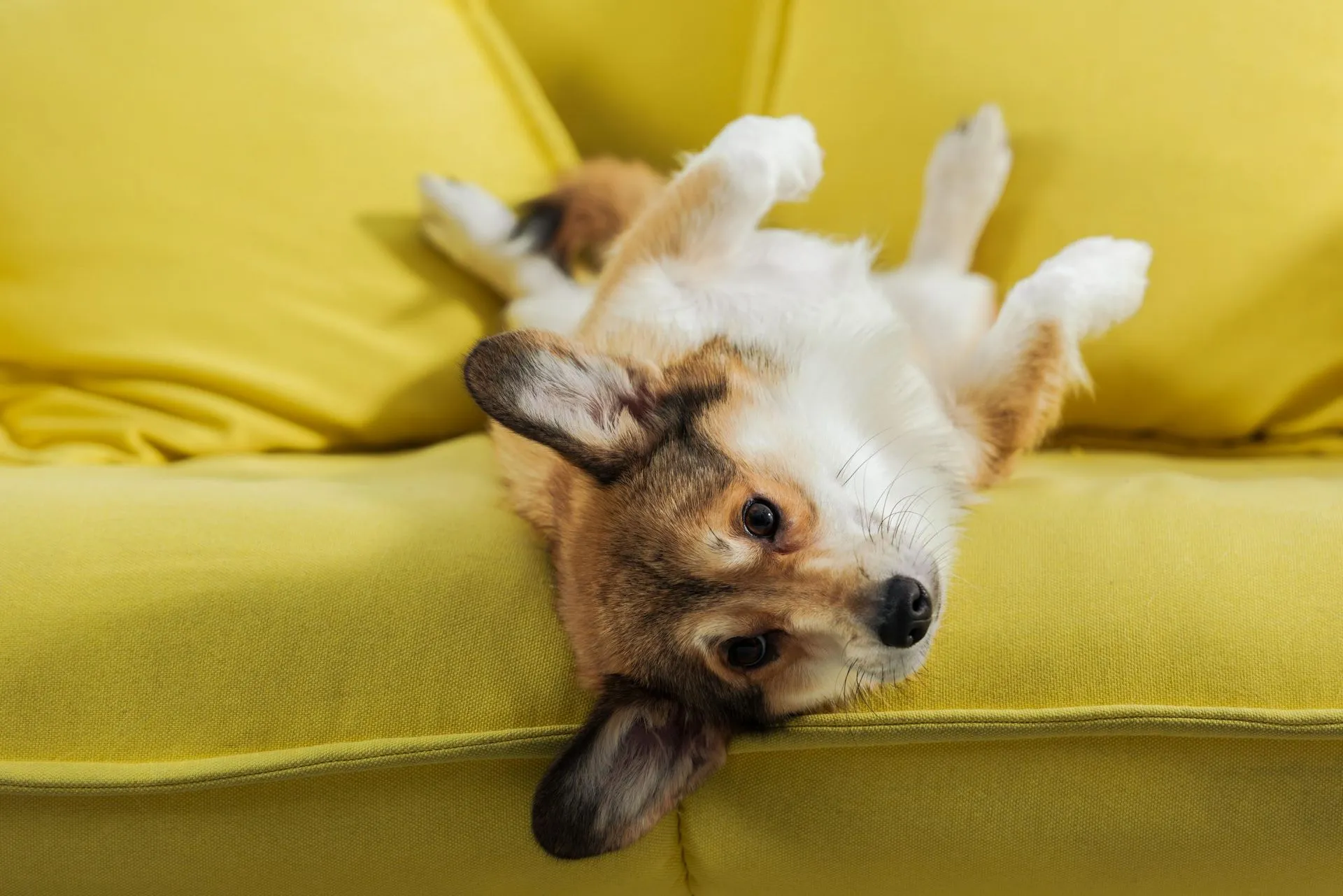For many dog owners, the image of a beloved canine curled up on the sofa is one of comfort and companionship. Yet, this can quickly become a challenge, especially when muddy paws threaten upholstery, or houseguests prefer a clean, dog-free seating area. If you find yourself asking, “How do I teach my dog not to jump on the couch?” you’re not alone. Many pet parents inadvertently create this habit, leading to frustration down the line. This article will guide you through effective, positive reinforcement techniques to help your dog understand boundaries and respect your furniture, ensuring a harmonious home for everyone.
The issue of a dog treating the couch as their personal bed is a common dilemma. It’s not necessarily a sign of disobedience but often a learned behavior that needs gentle redirection. Unlike teaching a puppy to come when called or stopping them from pulling on a leash, addressing couch-jumping requires a nuanced approach to an established routine. We’ll explore proven methods that help reinforce rules within your home, transforming unwanted sofa-surfing into respectful behavior.
Establishing a Designated “Place”: The Foundation of Good Manners
One of the most crucial steps in teaching your dog not to jump on the couch is providing them with an attractive alternative: their own comfortable bed or designated “place.” Dogs thrive on having their own space, a spot where they can feel secure, calm, and relaxed. This might mean having several dog beds placed strategically around your home, particularly in areas where the family congregates, like the living room.
When you enter a room where you don’t want your dog on the furniture, such as the lounge, bring their bed with you. Guide them to it and use a consistent command like “place” or “bed.” The goal is to make this designated spot a positive and rewarding experience. If your dog attempts to leave their area or jumps onto the sofa for attention, a firm but gentle “leave it” command, paired with a hand signal pointing towards their bed, can be very effective. This teaches them to stay in their own space. For puppies especially, understanding boundaries early on can prevent future challenges, much like teaching them how to stop your puppy from jumping on guests.
Back to Basics: Reaffirming Commands and Expectations
If your dog isn’t responding to your “place” or “in” commands, it’s a clear indication that they might not fully understand what’s expected of them. In such cases, it’s essential to revisit their foundational training. Don’t be discouraged; inconsistent understanding is common and easily remedied by reinforcing basic obedience.
A routine helps immensely. When you want your dogs to settle in a specific area, hold their bed(s) and ask them to sit. Once they’ve complied, place the bed in the desired spot. Then, call each dog individually to their bed and reward them with a small piece of kibble or a favorite treat for settling down. This positive reinforcement creates a strong association: their bed, regardless of its location, is a good and rewarding place to be.
This method also proves incredibly useful when traveling or visiting friends and family. By making their bed a portable sanctuary, you provide consistency and comfort in unfamiliar environments. Imagine staying at a hotel; if your dog is accustomed to settling on their designated mat or bed, they’ll sleep soundly, even if it’s just a makeshift bed like a fluffy shower mat. This adaptability is a testament to effective training and helps your dog understand boundaries everywhere, preventing them from jumping on unfamiliar furniture.
 Two chocolate Labradors relaxing on a large couch, illustrating the common challenge of dogs on furniture.
Two chocolate Labradors relaxing on a large couch, illustrating the common challenge of dogs on furniture.
The Perils of Inconsistency: Why Giving In Makes it Worse
One of the biggest obstacles to successfully teaching your dog not to jump on the couch is inconsistency. Allowing your dog on the sofa sometimes, but not others, sends mixed signals, making the training process significantly harder. Dogs are creatures of habit and thrive on clear, consistent rules. If they are permitted to jump on the sofa occasionally, they will naturally expect to be there whenever they wish, rather than waiting for an invitation.
This inconsistency can extend beyond just couch behavior, impacting other areas of their training. For instance, if a dog doesn’t respect the boundary of the sofa with one family member, it might translate into less respectful behavior during walks or general obedience. Maintaining clear boundaries consistently reinforces your role as the leader and ensures your dog understands and respects rules across all situations. Building this consistency in daily interactions, like when teaching your dog to come or working on how to stop puppy from pulling while walking, is key to overall good behavior.
Practice, Practice, Practice: Retraining Established Habits
If your dog has been accustomed to lounging on the sofa and you’ve now decided it’s time for a change, consistent practice is paramount. As with any behavioral modification, achieving desired results requires regular and dedicated effort. Whether it’s for cleanliness, personal space, or an upcoming gathering, the new regime needs to be practiced repeatedly until it becomes second nature for your dog.
When your dog is already on the sofa, gently direct them to their bed using their name and the “in” or “place” command. For example, “Bertie, in!” If Bertie hesitates, it means the positive association with his bed needs more reinforcement. Ensure he knows that following the command leads to a positive outcome – a treat, praise, or a favorite toy – in his designated spot. This is similar to how you would train a border collie to come when called, relying on consistent cues and rewards.
 A cozy Cocker Spaniel puppy peacefully sleeping in its dog bed, emphasizing the importance of a designated comfortable space.
A cozy Cocker Spaniel puppy peacefully sleeping in its dog bed, emphasizing the importance of a designated comfortable space.
Managing Over-Excitement: Knowing When to Scale Back Training
Sometimes, despite your best efforts, your dog might become overly excited, jumping on and off their bed, and running around. This heightened state of arousal is a clear sign that they are not ready for advanced training in that particular environment, especially if there are other people, food, or distractions present. In such scenarios, it’s more effective to temporarily scale back and create a calmer training setting.
To re-establish a calm focus, restart the training process in a quiet area. Have your dog settle in their bed, then place a food reward on the floor right next to it. This tangible reward gives them a clear reason to stay put and focus. Periodically, walk past their bed, lean down, and offer another piece of kibble. The strategic placement of the reward ensures your dog can easily see it, providing a positive starting point. Over time, they will learn to ignore distractions, understanding that staying calmly in their bed will lead to consistent rewards. This method helps your dog develop self-control, which is useful in many scenarios, including how to stop a puppy pulling on leash.
Over a week or two of consistent practice, your dog will become more accustomed to going to their bed and staying there for extended periods. They will learn that whether it’s praise, an ear scratch, or a tasty treat, a reward will always come their way for good behavior. This commitment to positive reinforcement and consistency is the most effective way to teach your dog not to jump on the couch and maintain a well-behaved companion.
 An owner gently guiding their dog with a hand signal, demonstrating positive reinforcement in training.
An owner gently guiding their dog with a hand signal, demonstrating positive reinforcement in training.
Conclusion
Teaching your dog not to jump on the couch is a journey that requires patience, consistency, and positive reinforcement. By providing a comfortable alternative, reinforcing basic commands, maintaining clear boundaries, practicing regularly, and understanding when to adjust your training environment, you can effectively guide your dog toward respectful behavior. Remember, a well-trained dog is a happy dog, and a consistent approach ensures a harmonious home where both you and your furry friend can coexist comfortably.
For more detailed advice on positive, reward-based training methods and personalized guidance, consider exploring professional dog training resources or applications that offer structured programs to help you and your canine companion thrive.
